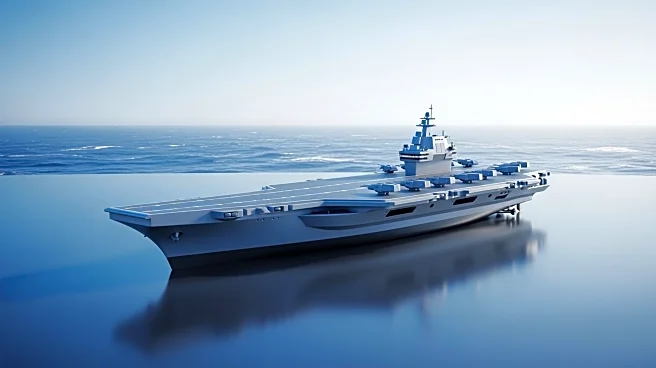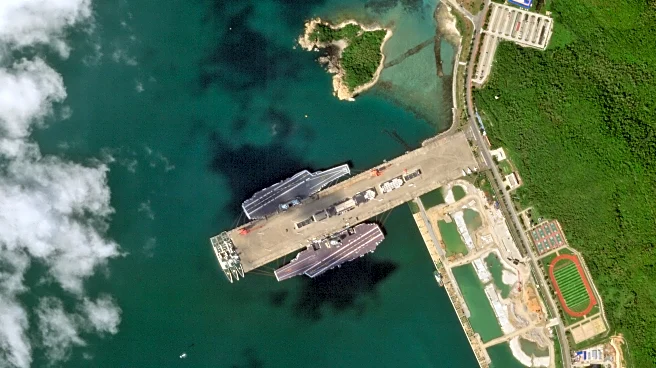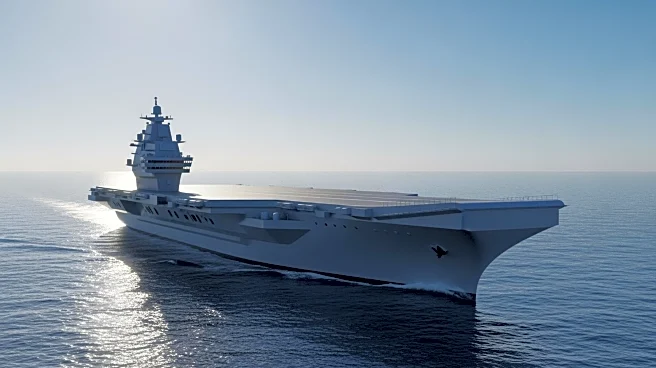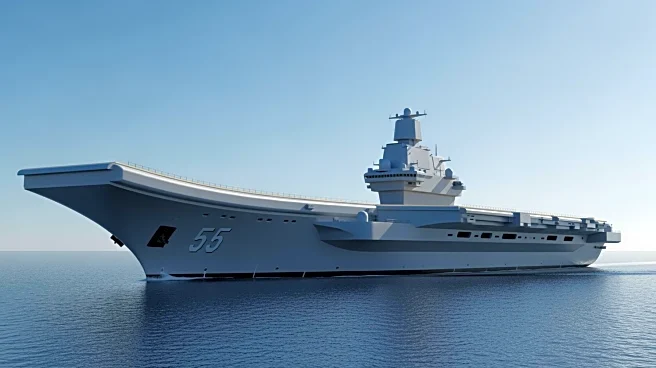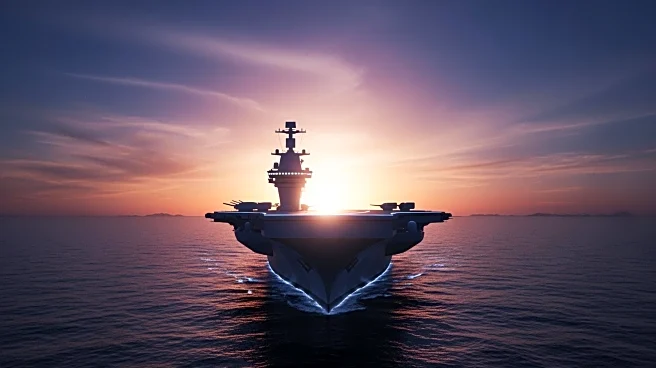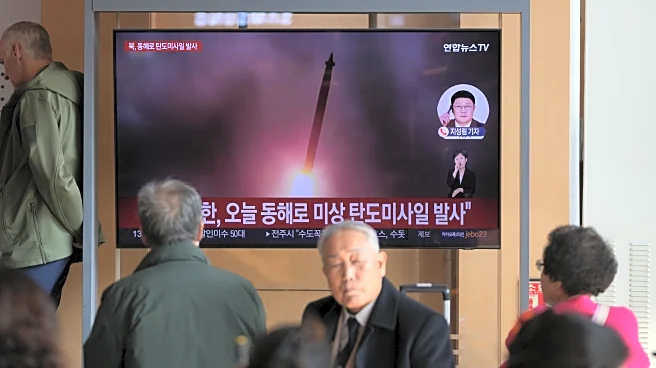What's Happening?
China has officially commissioned its third aircraft carrier, the Fujian, marking a significant advancement in its naval capabilities. The Fujian, which is the first carrier designed and built entirely
by China, was commissioned at a naval base on Hainan island in a ceremony attended by Xi Jinping. This development is part of China's broader military expansion aimed at modernizing its forces by 2035 and achieving 'world-class' status by mid-century. The Fujian is equipped with electromagnetic catapults, allowing it to launch heavier aircraft, enhancing its operational range and effectiveness. This move is seen as a step towards challenging U.S. naval dominance in the Indo-Pacific region, particularly in the Second Island Chain, which includes strategic areas near Guam and Taiwan.
Why It's Important?
The commissioning of the Fujian represents a strategic shift in China's military posture, aiming to extend its influence beyond its immediate coastal waters. This development could alter the balance of power in the Indo-Pacific, where the U.S. has traditionally maintained a strong presence. The ability to project power further into the Pacific could enable China to contest U.S. military facilities and influence in the region, potentially delaying American military assistance in the event of a conflict involving Taiwan. The Fujian's advanced capabilities also signify China's intent to reshape the international order, as noted by the Pentagon, which views China as the only competitor with the capacity to challenge U.S. global influence.
What's Next?
China's naval expansion is likely to continue, with plans to build additional aircraft carriers, potentially including nuclear-powered vessels. This would further enhance China's ability to operate globally without the need for frequent refueling. The Fujian's commissioning has already raised concerns in neighboring countries like Japan, which is closely monitoring China's military activities. The U.S. and its allies may need to reassess their strategic positions in the Indo-Pacific to counterbalance China's growing naval capabilities. Additionally, China's efforts to expand its network of overseas bases could further support its global military ambitions.
Beyond the Headlines
The introduction of the Fujian highlights the broader implications of China's military modernization, which is not solely focused on Taiwan but also aims to deter major powers and expand China's global influence. The carrier's advanced technology, including electromagnetic catapults, positions China as a formidable naval power capable of conducting operations far from its shores. This development underscores the importance of maintaining transparency in military advancements to avoid escalating tensions in the region. As China continues to showcase its military assets, the international community must consider the long-term strategic impacts of China's growing military presence.
